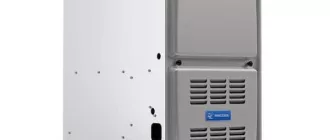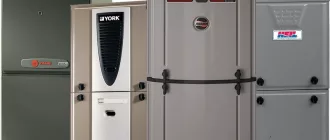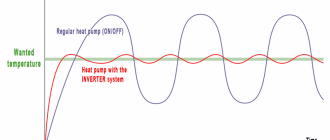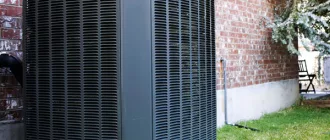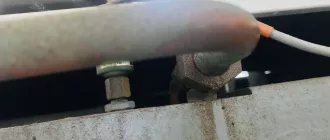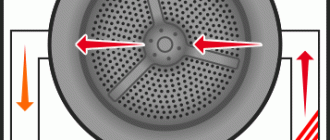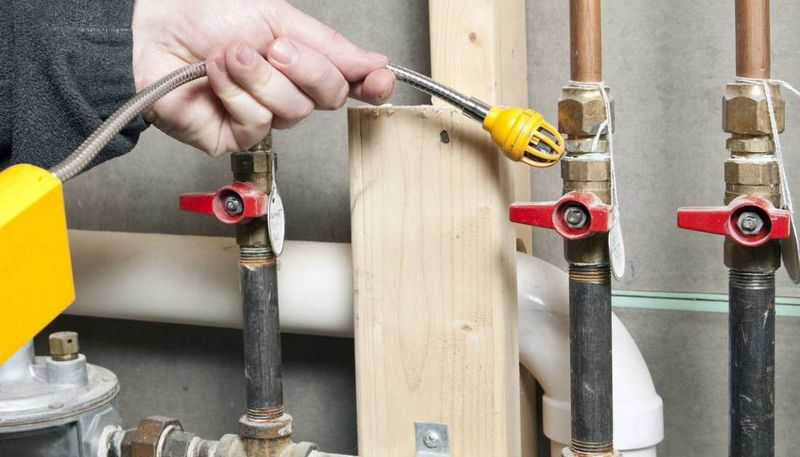
Keeping Columbus Homeowners Safe from Furnace Carbon Monoxide Poisoning
Carbon monoxide poisoning is a serious threat to the safety and well-being of homeowners in Columbus. This colorless, odorless gas can be emitted from furnaces, posing a significant risk to those living in the area. At our company, we prioritize the safety of our customers, offering reliable solutions to prevent furnace carbon monoxide poisoning.
Why is furnace carbon monoxide poisoning dangerous?
Carbon monoxide is often referred to as the “silent killer” as it is undetectable by human senses. Inhalation of this gas can lead to various symptoms such as headaches, dizziness, nausea, and even death in extreme cases. Furnaces are one common source of carbon monoxide leaks in homes, making it crucial to take preventive measures.
“Our team of experts understands the importance of maintaining a safe environment for Columbus homeowners. We provide comprehensive furnace inspections and installations to ensure your home is free from the dangers of carbon monoxide poisoning.”
How can we help protect you?
At our company, we have a team of highly trained technicians who specialize in furnace inspections and installations. We use state-of-the-art equipment to detect any potential leaks or malfunctions in your furnace system. Our experts will thoroughly examine your furnace, identify any risks, and provide the necessary repairs or replacements to ensure your safety.
Choose safety and peace of mind
By choosing our services, Columbus homeowners can have peace of mind knowing that their homes are protected from the dangers of furnace carbon monoxide poisoning. Don’t risk the health and safety of your family – contact us today for a comprehensive inspection and ensure a safe living environment.
The dangers of carbon monoxide
Carbon monoxide (CO) is an odorless, colorless gas that can be extremely dangerous. It is produced when fuels such as gas, oil, coal, or wood are burned without proper ventilation. Since it is virtually undetectable by human senses, carbon monoxide poisoning can occur without any warning.
Exposure to carbon monoxide can lead to serious health effects, and in extreme cases, it can be life-threatening. The gas interferes with the body’s ability to transport oxygen, leading to symptoms such as dizziness, headaches, nausea, confusion, and even loss of consciousness.
Preventing carbon monoxide poisoning is crucial for the safety of you and your family. Here are some steps you can take:
- Install a carbon monoxide detector: These devices can alert you if carbon monoxide levels in your home become too high. Make sure to test them regularly and replace batteries as needed.
- Have your furnace inspected regularly: A professional inspection of your furnace can identify any potential issues that may cause carbon monoxide leaks. Regular maintenance can also ensure that your furnace is running efficiently and safely.
- Never use a generator or grill indoors: Generators and grills should always be used outdoors in well-ventilated areas. Never use them inside your home, garage, or other enclosed spaces, as this can lead to a buildup of carbon monoxide.
- Keep vents and chimneys clear: Ensure that all vents and chimneys are clear of debris, snow, or other obstructions. Blocked vents can prevent carbon monoxide from properly venting out of your home.
By taking these precautions and being aware of the dangers of carbon monoxide, you can help ensure the safety of your home and protect your loved ones from this silent killer.
How to prevent carbon monoxide poisoning
Carbon monoxide (CO) is a silent killer that can be emitted by faulty furnaces. It is invisible, odorless, and tasteless, making it extremely dangerous. Fortunately, there are several steps you can take to prevent carbon monoxide poisoning in your home:
- Install carbon monoxide detectors: Make sure to have a working carbon monoxide detector on every level of your home, especially near bedrooms. Test them regularly to ensure they are functioning properly.
- Maintain your furnace: Schedule regular maintenance for your furnace, including annual inspections. A professional technician can identify and fix any issues that may lead to carbon monoxide leaks.
- Keep vents clear: Make sure all vents and exhaust pipes are clear of debris, snow, or any other obstructions. Blocked vents can cause carbon monoxide to back up into your home.
- Avoid running engines indoors: Never run a car, generator, or any other combustion engine in an enclosed space, such as your garage. Carbon monoxide can quickly build up and become lethal.
- Do not use gas-powered appliances indoors: Gas-powered appliances such as ovens, stoves, or grills should never be used indoors. Only use them in well-ventilated areas to prevent carbon monoxide buildup.
By following these preventative measures, you can ensure the safety of you and your family from the dangers of carbon monoxide poisoning. Remember, it’s better to be safe than sorry!
Importance of regular furnace maintenance
Regular maintenance of your furnace is essential to ensure its proper functioning and to prevent the risk of carbon monoxide poisoning. Carbon monoxide is an odorless and colorless gas that can be emitted by faulty furnaces and can have serious health consequences if not detected in time.
By scheduling regular maintenance for your furnace, you can:
- Ensure the safe operation of your furnace
- Detect and fix any potential issues early on
- Extend the lifespan of your furnace
- Improve energy efficiency
During a maintenance service, a professional HVAC technician will perform various tasks, including:
- Cleaning and inspecting the furnace components
- Tuning up the system for optimal performance
- Checking for any leaks or cracks
- Testing the carbon monoxide detectors
Regular maintenance can help identify potential problems before they become major issues, saving you from expensive repairs and ensuring your safety. It is recommended to schedule a furnace maintenance at least once a year, preferably before the heating season begins.
| Reduced risk of carbon monoxide leaks | Increased risk of carbon monoxide poisoning |
| Improved indoor air quality | Poor indoor air quality |
| Cost savings on energy bills | Higher energy bills |
| Extended lifespan of the furnace | Higher risk of breakdowns and costly repairs |
Don’t compromise your safety and the efficiency of your furnace. Schedule regular maintenance for your furnace today and ensure the well-being of your home and family.
Signs of a potential carbon monoxide leak
- Headaches: If you or your family members are experiencing frequent headaches, this could be a sign of carbon monoxide poisoning. Headaches caused by carbon monoxide may feel similar to tension headaches or migraines.
- Dizziness: Feeling lightheaded or dizzy, especially when you’re inside your home, can indicate a carbon monoxide leak. This symptom is often accompanied by other signs such as nausea or confusion.
- Nausea: Carbon monoxide can cause stomach upset and nausea. If you notice frequent episodes of feeling sick to your stomach without any other obvious cause, it’s essential to consider the possibility of a carbon monoxide leak.
- Confusion: One of the concerning effects of carbon monoxide poisoning is confusion, which can range from mild disorientation to difficulty focusing or understanding simple tasks. If you or your loved ones are experiencing unexplained confusion, it’s crucial to rule out carbon monoxide as a potential cause.
- Flu-like symptoms: Carbon monoxide poisoning can mimic flu symptoms, including fatigue, weakness, body aches, and a sore throat. If multiple people in your household are consistently experiencing these symptoms, it’s wise to investigate the possibility of a carbon monoxide leak.
- Increased heart rate: Carbon monoxide can have a direct impact on the cardiovascular system, causing an increased heart rate or palpitations. If you notice a rapid or irregular heartbeat without any apparent explanation, carbon monoxide poisoning could be a potential cause.
If you suspect a carbon monoxide leak in your home, it’s imperative to take immediate action. Leave the premises, call emergency services, and have a professional inspect your furnace and ventilation system. Remember, carbon monoxide is odorless and colorless, making it impossible to detect without proper equipment. Regular maintenance and inspections of your heating system are essential to ensure the safety of you and your family.
Installing carbon monoxide detectors
Protect your home and loved ones from the silent danger of carbon monoxide poisoning by installing carbon monoxide detectors. These devices are designed to monitor the levels of carbon monoxide in the air and provide an early warning in case of a leak. Here are some key benefits of installing carbon monoxide detectors:
- Early detection: Carbon monoxide is an odorless and colorless gas, making it impossible to detect without a detector. Installing carbon monoxide detectors ensures that you will be alerted at the earliest signs of a leak, allowing you to take immediate action.
- Peace of mind: By having carbon monoxide detectors installed, you can have peace of mind knowing that your family and home are protected from this invisible threat.
- Compliance with safety regulations: Many areas have specific regulations requiring the installation of carbon monoxide detectors in residential buildings. By installing these detectors, you can ensure that your home is compliant with the local safety regulations.
- Easy installation: Carbon monoxide detectors are easy to install and can be placed in strategic locations throughout your home. Follow the manufacturer’s instructions for proper installation and placement to ensure optimum effectiveness.
- Cost-effective: Carbon monoxide detectors are an affordable investment compared to the potential costs and dangers associated with carbon monoxide poisoning. The price of detectors can vary, but the peace of mind they provide is invaluable.
- Reliable protection: Carbon monoxide detectors are designed to be highly sensitive and reliable, providing continuous monitoring to ensure your safety. Regularly check and test your detectors to verify that they are functioning properly.
Installing carbon monoxide detectors is a crucial step in preventing carbon monoxide poisoning in your home. Don’t wait until it’s too late – protect your family by taking proactive measures today!
Choosing a qualified HVAC technician
When it comes to ensuring the safety of your home and family, it is crucial to choose a qualified HVAC technician for all your furnace needs. Here are some tips to help you make the right choice:
- Research and ask for recommendations: Start by researching reputable HVAC technicians in your area. Ask friends, family, and neighbors for recommendations to narrow down your options.
- Check for proper certifications and licenses: Make sure the technician you hire is licensed, bonded, and insured. This ensures that they have the knowledge and expertise required to work on your furnace safely.
- Review experience and qualifications: Look for technicians who have extensive experience in the HVAC industry. Check if they have any additional certifications or training that demonstrate their expertise in furnace maintenance and repair.
- Ask for references: Don’t hesitate to ask for references from previous clients. A reputable technician will gladly provide references and testimonials that showcase their quality of work and customer satisfaction.
- Compare pricing and warranties: While price shouldn’t be the only factor in your decision, it’s essential to compare pricing and warranties offered by different HVAC technicians. Choose a technician who offers fair pricing and provides warranties on their services.
By following these tips, you can ensure that you choose a qualified HVAC technician who will prioritize your safety and provide reliable and efficient furnace services.
Ensuring proper ventilation in your home
Proper ventilation is essential to maintain a healthy and safe living environment. Without adequate ventilation, harmful pollutants can accumulate in your home, posing a risk to your health.
Here are some steps you can take to ensure proper ventilation in your home:
- Open windows: Opening windows can help bring in fresh air and improve air circulation. It is especially important to open windows when cooking or using chemical-based cleaning products.
- Use exhaust fans: Install exhaust fans in your kitchen and bathroom to remove excess moisture and odors. Make sure these fans are properly vented to the outside of your home.
- Clean air filters: Regularly clean and replace air filters in your HVAC system to ensure proper airflow and prevent the accumulation of dust and pollutants.
- Keep vents clear: Make sure air vents, registers, and ducts are free from obstructions such as furniture, rugs, or curtains. Blocked vents can restrict airflow and hinder proper ventilation.
- Install a carbon monoxide detector: Carbon monoxide is a colorless and odorless gas that can be deadly. Install a carbon monoxide detector in your home to alert you of any potential leaks.
By following these steps, you can ensure proper ventilation in your home and reduce the risk of harmful pollutants and gases like carbon monoxide. Don’t compromise on your family’s safety and well-being – take action today!
The importance of annual furnace inspections
Regular maintenance and inspections for your furnace are crucial to ensure its safe and efficient operation. Annual furnace inspections can help prevent furnace carbon monoxide poisoning, as well as identify any potential safety hazards. Here are a few reasons why annual furnace inspections are so important:
- Prevent carbon monoxide leaks: Carbon monoxide is a deadly gas that can be produced by faulty furnaces. Regular inspections can help detect any leaks or issues that may be putting you and your family at risk.
- Ensure peak performance: A well-maintained furnace operates more efficiently, which can help lower your energy bills and extend its lifespan. Annual inspections can identify any performance issues and help optimize your furnace’s efficiency.
- Identify safety hazards: Furnaces can be prone to issues such as gas leaks, electrical problems, or worn-out components. Inspections can identify these hazards early on and prevent accidents or costly repairs.
- Prolong the lifespan of your furnace: Regular maintenance and inspections can help catch small problems before they escalate into major issues. This proactive approach can extend the lifespan of your furnace and save you money in the long run.
Don’t wait until there’s a problem with your furnace to schedule an inspection. Contact our professional technicians today to arrange your annual furnace inspection and ensure the safety and efficiency of your heating system.
Common sources of carbon monoxide in the home
Carbon monoxide is a silent and deadly gas that can be present in your home without you even knowing it. It is produced by the incomplete burning of fuels, and can quickly reach dangerous levels if not detected and addressed. Here are some common sources of carbon monoxide in the home:
- Furnaces: Gas furnaces are a common source of carbon monoxide in homes. If the furnace is not properly maintained or if there is a problem with the ventilation system, carbon monoxide can be released into the home.
- Fireplaces: Wood-burning fireplaces can produce carbon monoxide if they are not properly vented. It is important to ensure that the chimney is clean and free from any obstructions.
- Stoves and ovens: Gas stoves and ovens can produce carbon monoxide if they are not properly adjusted or if there is a problem with the gas supply. It is important to have these appliances regularly inspected and maintained by a professional.
- Water heaters: Gas water heaters can also produce carbon monoxide if they are not properly vented. Regular maintenance and inspection is essential to ensure their safe operation.
- Portable generators: If used indoors or in a poorly ventilated area, portable generators can produce high levels of carbon monoxide. It is important to use them in a well-ventilated area and keep them at a safe distance from the home.
It is important to be aware of the common sources of carbon monoxide in the home in order to prevent exposure to this dangerous gas. Regular maintenance and inspection of appliances, as well as the installation of carbon monoxide detectors, can help ensure the safety of you and your family.
Understanding the symptoms of carbon monoxide poisoning
Carbon monoxide (CO) is a colorless, odorless gas that can be extremely dangerous if not detected early. It is produced by the incomplete combustion of fossil fuels such as natural gas, oil, and coal. When inhaled, carbon monoxide displaces oxygen in the bloodstream, leading to severe health complications and even death. It is crucial to be aware of the symptoms of carbon monoxide poisoning to ensure your safety and the safety of your loved ones.
Common symptoms of carbon monoxide poisoning include:
- Headache
- Dizziness
- Nausea
- Shortness of breath
- Fatigue
- Confusion
- Blurry vision
- Loss of consciousness
If you or anyone in your household experience these symptoms, it is important to immediately seek fresh air and call emergency services. Carbon monoxide poisoning can be life-threatening, and delayed treatment can have serious consequences.
Preventing carbon monoxide poisoning:
Ensuring the safety of your home and family is essential. Here are some preventive measures you can take:
- Install carbon monoxide detectors on every level of your home, especially near bedrooms and sleeping areas.
- Regularly inspect and maintain your heating system, including furnaces and chimneys.
- Never use generators or charcoal grills indoors or in enclosed spaces.
- Keep all vents, flues, and chimneys clear of debris and blockages.
- Avoid using fuel-burning appliances without proper ventilation.
By taking these precautions and being aware of the symptoms, you can protect yourself and your loved ones from the dangers of carbon monoxide poisoning. Stay informed and stay safe!
How to respond in case of carbon monoxide exposure
If you suspect that you or someone in your household has been exposed to carbon monoxide, it is crucial to take immediate action. Follow these steps to ensure your safety:
- Exit the premises: If you are experiencing symptoms of carbon monoxide poisoning, such as dizziness, headache, nausea, or confusion, leave the area immediately. It is important to get to fresh air as soon as possible.
- Call for help: Once you are outside and in a safe location, call emergency services or your local fire department to report the incident. Explain the situation and provide them with your location.
- Do not re-enter the building: Even if you start to feel better, do not go back inside until it has been deemed safe by a professional. Carbon monoxide can linger in the air and continue to pose a threat.
- Seek medical attention: If you or anyone else has been exposed to carbon monoxide, it is important to seek medical attention to assess the extent of the exposure and receive appropriate treatment. This is especially critical for pregnant women, children, and elderly individuals.
- Have your appliances inspected: After the incident, it is important to have a qualified professional inspect and service your appliances to ensure they are not the source of the carbon monoxide leak. Regular maintenance and inspections can help prevent future incidents.
- Install carbon monoxide detectors: To prevent future exposure, install carbon monoxide detectors in your home. These devices will alert you to the presence of carbon monoxide so that you can take immediate action. Place them near bedrooms and on every level of your home.
Remember, carbon monoxide is a silent and deadly gas. It is important to be proactive in protecting yourself and your loved ones by taking the necessary precautions and being aware of the signs of carbon monoxide exposure.
Carbon monoxide safety tips for Columbus homeowners
Carbon monoxide poisoning is a serious threat for homeowners, as it is a colorless and odorless gas that can be deadly if inhaled in high concentrations. However, there are several steps you can take to ensure the safety of your home and family:
- Install carbon monoxide detectors: Place carbon monoxide detectors on every level of your home, especially near sleeping areas. Make sure to test them regularly and replace the batteries at least once a year.
- Maintain your heating system: Schedule regular inspections and maintenance for your furnace, boiler, or any other heating system in your home. A well-maintained system is less likely to leak carbon monoxide.
- Do not block vents: Make sure that all vents, flues, and chimneys are clear of any obstructions, such as debris or snow. Blocked vents can cause carbon monoxide to be trapped inside your home.
- Never use outdoor equipment indoors: Never use portable generators, grills, or other outdoor equipment inside your home or garage. These appliances produce carbon monoxide and should only be used in well-ventilated areas.
- Be aware of the symptoms: Familiarize yourself with the symptoms of carbon monoxide poisoning, such as headache, dizziness, nausea, and confusion. If you experience any of these symptoms, leave your home immediately and seek medical attention.
- Have an emergency plan: Create an emergency plan with your family that includes a meeting point outside of the house. In the event of a carbon monoxide leak, everyone should know what to do and where to go.
By following these carbon monoxide safety tips, you can help prevent the risk of poisoning and ensure the safety of your Columbus home and loved ones.
Why carbon monoxide safety is crucial for families
Carbon monoxide (CO) is a silent killer that poses a significant threat to families. This colorless and odorless gas is released from the incomplete burning of carbon-based fuels, such as gas, oil, coal, and wood. It can be produced by home heating systems, stoves, boilers, water heaters, fireplaces, and other appliances.
Carbon monoxide poisoning occurs when this gas builds up in an enclosed space and is inhaled by individuals. The symptoms of CO poisoning can be subtle and easily mistaken for flu-like illnesses, including headaches, dizziness, nausea, vomiting, confusion, and fatigue. In severe cases, CO poisoning can lead to unconsciousness, brain damage, and even death.
It is crucial for families to prioritize carbon monoxide safety in their homes to protect their loved ones from the harmful effects of this gas. Here are some reasons why carbon monoxide safety should be a top priority:
- Prevention of health issues: Ensuring carbon monoxide safety helps prevent the development of health issues caused by CO poisoning. By detecting and addressing potential sources of CO in the home, the risk of exposure can be minimized.
- Peace of mind: Taking necessary precautions to prevent carbon monoxide buildup provides peace of mind for families. Knowing that the home is safe from this silent killer allows families to live comfortably without constant worry.
- Protection for vulnerable individuals: Vulnerable individuals, such as children, pregnant women, older adults, and those with pre-existing health conditions, are at a higher risk of experiencing severe effects from CO poisoning. Implementing carbon monoxide safety measures ensures their protection.
- Compliance with regulations: Many jurisdictions have laws and regulations in place regarding carbon monoxide safety in residential properties. Following these regulations not only keeps families safe but also ensures compliance with the law.
- Preventing property damage: Carbon monoxide leaks can cause damage to property, especially if left undetected for a long time. By regularly inspecting and maintaining heating systems, appliances, and ventilation, the risk of leaks and property damage can be reduced.
Investing in carbon monoxide detectors, installing them in the appropriate locations, and regularly testing and replacing batteries are important steps in ensuring the safety of families. Additionally, having heating systems, fireplaces, and fuel-burning appliances professionally inspected and maintained can help prevent carbon monoxide buildup.
By prioritizing carbon monoxide safety, families can create a healthy and secure environment for their loved ones, free from the dangers of this silent killer.
Protecting your loved ones from carbon monoxide
Carbon monoxide is a silent killer that can have devastating consequences for your family. Without a proper plan in place, you and your loved ones are at risk of exposure to this deadly gas.
At Safe Homes Inc., we understand the importance of keeping your home and family safe from carbon monoxide poisoning. That’s why we offer a range of products and services designed to prevent and detect the presence of carbon monoxide in your home.
Our expert team of technicians can install carbon monoxide detectors that are strategically placed throughout your home, ensuring that any potential leaks are detected early on. These detectors are equipped with alarms that will sound when dangerous levels of carbon monoxide are present, giving you and your family ample time to evacuate and seek medical attention.
Additionally, we offer furnace inspections and maintenance services to ensure that your heating system is operating properly and not producing dangerous levels of carbon monoxide. Our technicians are trained to identify and address any issues with your furnace, ensuring that it is functioning safely and efficiently.
With our comprehensive approach to carbon monoxide protection, you can have peace of mind knowing that your loved ones are safe from this silent killer. Don’t wait until it’s too late – contact Safe Homes Inc. today to schedule a consultation and take the necessary steps to protect your home and family.
| Benefits of our carbon monoxide protection services: |
|
The risks of carbon monoxide in the winter
During the winter months, the risk of carbon monoxide (CO) poisoning increases due to the increased use of heating systems. CO is a colorless, odorless gas that can be released by faulty furnaces, water heaters, or other heating appliances. It can quickly build up in enclosed spaces and pose a serious health hazard.
Here are some important facts to consider about the risks of carbon monoxide:
- Silent and deadly: Carbon monoxide is often referred to as the “silent killer” because its presence is difficult to detect without a CO detector. Exposure to high levels of CO can lead to symptoms such as headache, dizziness, nausea, and confusion. Prolonged exposure or high levels of CO can be fatal.
- Common sources: Carbon monoxide can be produced by any fuel-burning appliance or device, including furnaces, water heaters, fireplaces, and gas stoves. It is important to ensure that these appliances are properly maintained and adequately ventilated to prevent CO buildup.
- Preventive measures: To protect yourself and your family from CO poisoning, it is essential to install CO detectors on every level of your home and near sleeping areas. Regular maintenance of heating systems and proper ventilation are also critical. Make sure to have a professional inspection of your heating appliances at least once a year.
Don’t take the risk of carbon monoxide lightly. Ensure the safety of your home and loved ones by being aware of the potential dangers and taking necessary precautions. Remember, prevention is key when it comes to carbon monoxide poisoning.
Common misconceptions about carbon monoxide
Carbon monoxide (CO) is a colorless, odorless gas that can be extremely dangerous if not detected and monitored properly. There are several common misconceptions about carbon monoxide that need to be addressed to ensure the safety of homeowners in Columbus:
- Myth: Carbon monoxide is only produced by furnaces.
- Myth: Carbon monoxide detectors are not necessary if you have a newer home.
- Myth: Opening windows and doors can effectively remove carbon monoxide from your home.
- Myth: You will always experience symptoms if there is carbon monoxide in your home.
- Myth: Carbon monoxide poisoning only occurs in the winter.
Fact: While furnaces are a common source of carbon monoxide, this gas can also be produced by other fuel-burning appliances such as water heaters, gas stoves, fireplaces, and portable generators.
Fact: Carbon monoxide can be present in any home, regardless of its age. It is important to install carbon monoxide detectors on every level of your home and near sleeping areas, regardless of the age of your home.
Fact: Opening windows and doors can help to ventilate your home, but it is not enough to remove carbon monoxide completely. You need to install carbon monoxide detectors and have regular maintenance on your fuel-burning appliances to ensure their safe operation.
Fact: Carbon monoxide poisoning can be deadly, and its symptoms are often overlooked or mistaken for other illnesses. It is important to have carbon monoxide detectors in your home to detect this gas, as it cannot be detected by human senses alone.
Fact: Carbon monoxide can be produced at any time of the year. Any fuel-burning appliance can produce carbon monoxide, so it is important to maintain and inspect these appliances regularly, regardless of the season.
By understanding these common misconceptions about carbon monoxide, homeowners in Columbus can take the necessary steps to ensure the safety of their homes and protect their families from this deadly gas.
The hidden dangers of a faulty furnace
Is your furnace running smoothly? Have you had it checked recently? A faulty furnace can pose serious risks to you and your family’s health. Carbon monoxide poisoning is a silent killer, and a malfunctioning furnace is one of the leading causes of carbon monoxide leaks in homes.
Carbon monoxide is a colorless, odorless gas that can be released from a faulty furnace. Breathing in high levels of carbon monoxide can lead to symptoms like headache, dizziness, nausea, and even death. Don’t put your loved ones at risk. Ensure the safety of your home with regular furnace maintenance and inspections.
Signs of a faulty furnace:
- Yellow or flickering flame instead of a steady blue flame
- Excessive soot or rust around the furnace
- Odd smells or strange noises coming from the unit
- Frequent pilot light outages or difficulty starting the furnace
- Uneven heating or inconsistent temperature control in your home
Don’t wait until it’s too late. The health and safety of your family are too important. Call us today for a professional furnace inspection and maintenance service. Our team of experts will ensure that your furnace is running efficiently and safely. We have the knowledge and experience to detect any potential issues and fix them before they become a serious problem.
Protect your loved ones from the hidden dangers of a faulty furnace. Schedule your furnace maintenance appointment now!
Questions and answers:
What is carbon monoxide poisoning?
Carbon monoxide poisoning occurs when a person inhales too much carbon monoxide gas. It is a colorless and odorless gas that is produced by the incomplete burning of fuels such as natural gas, oil, wood, and coal. When released in confined spaces, it can be deadly.
How can a furnace cause carbon monoxide poisoning?
A malfunctioning or improperly installed furnace can produce carbon monoxide gas. If there is a crack or hole in the heat exchanger, the gas can escape and circulate in the home, leading to carbon monoxide poisoning.
What are the symptoms of carbon monoxide poisoning?
The symptoms of carbon monoxide poisoning can vary from mild to severe. Common symptoms include headache, dizziness, nausea, shortness of breath, confusion, and vomiting. In severe cases, it can lead to loss of consciousness and even death.
How can I prevent carbon monoxide poisoning in my home?
There are several steps you can take to prevent carbon monoxide poisoning in your home. First, make sure your furnace is regularly inspected and maintained by a professional. Install carbon monoxide detectors on every level of your home and outside every sleeping area. Never use generators, charcoal grills, or other fuel-burning devices inside your home or garage. Finally, never ignore the symptoms of carbon monoxide poisoning and seek immediate medical attention if you suspect exposure.

